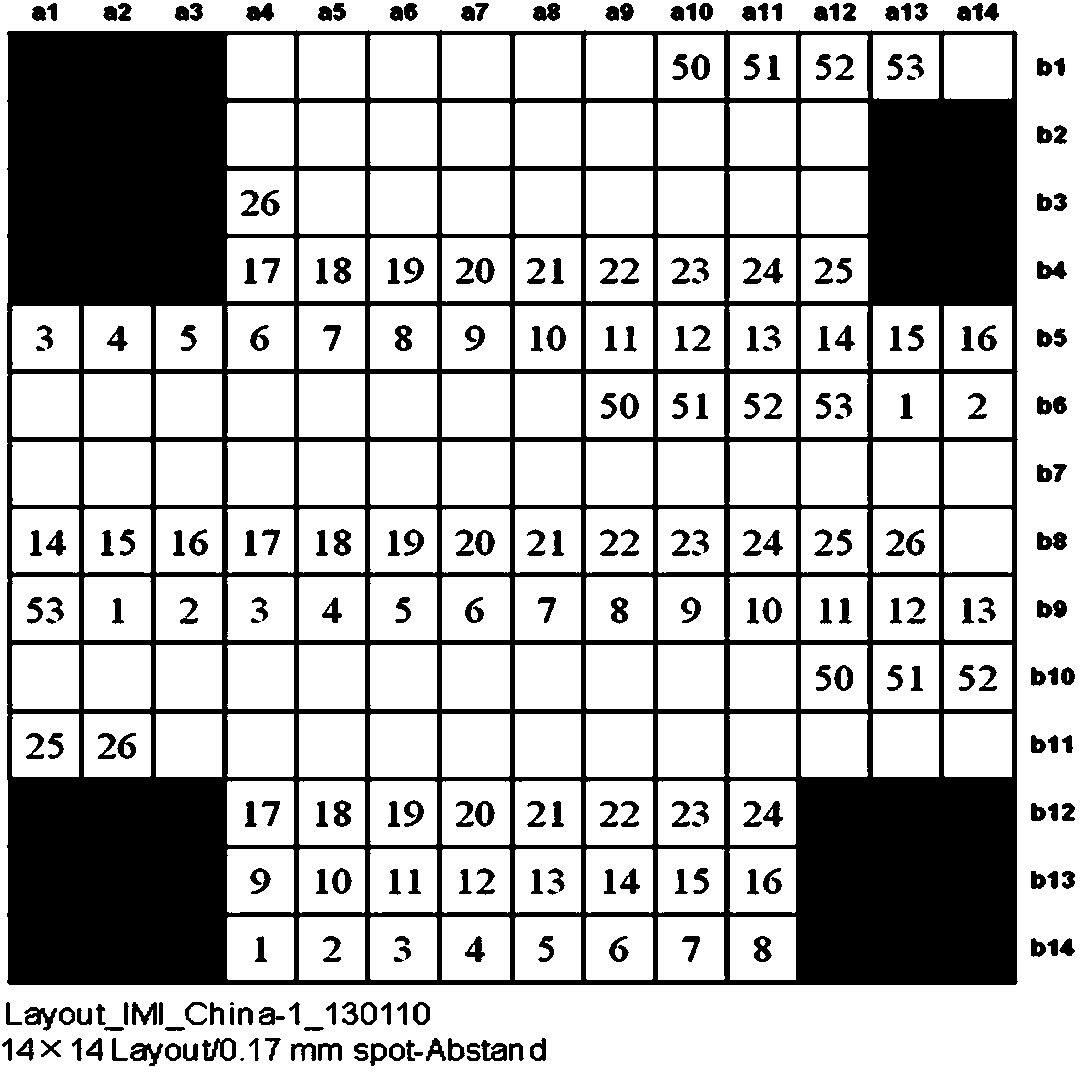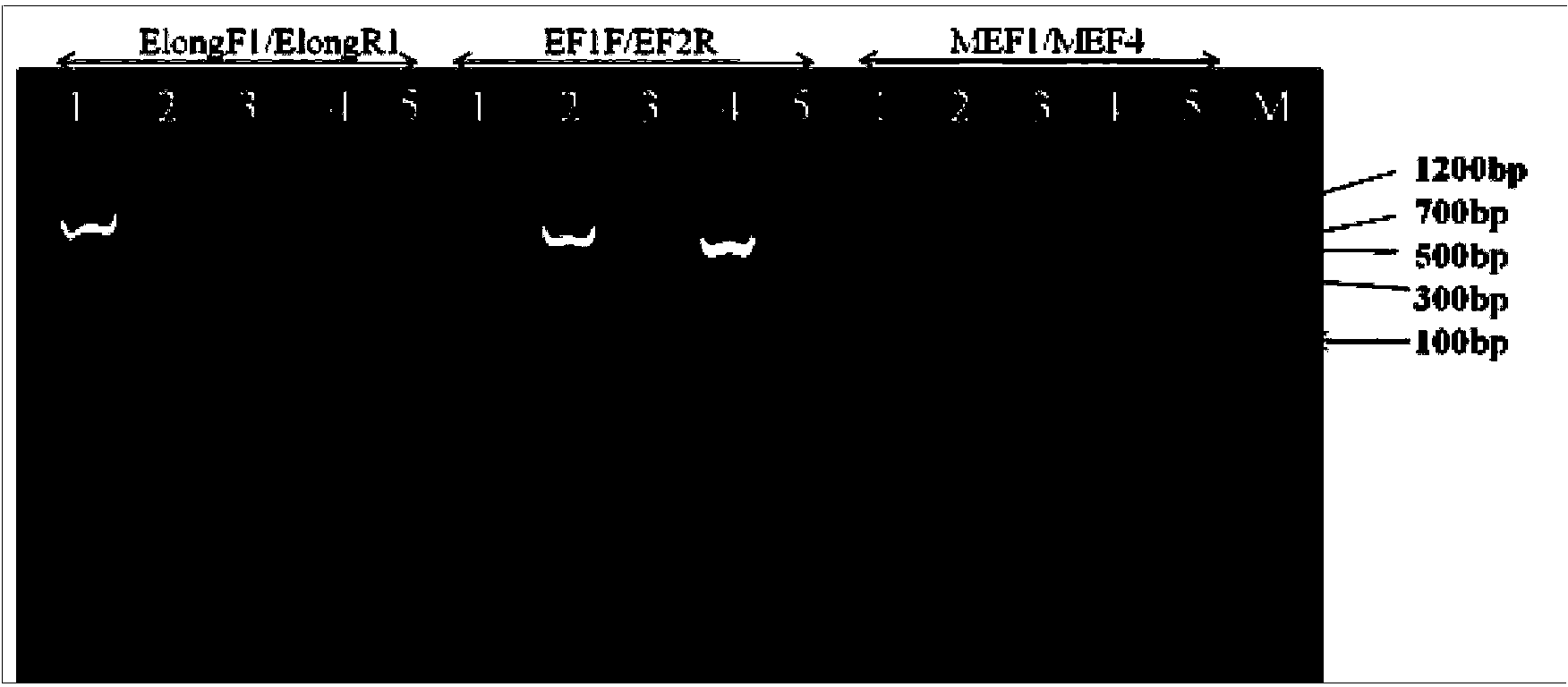Gene chip for detecting pathogenic fungi of poplar canker and application thereof
A technology for poplar canker and pathogenic fungi, which is applied in the field of gene chips and can solve problems such as population limitation and time-consuming technical regulations
- Summary
- Abstract
- Description
- Claims
- Application Information
AI Technical Summary
Problems solved by technology
Method used
Image
Examples
Embodiment 1
[0075] Embodiment 1 constructs gene chip
[0076] A gene chip for detecting poplar canker pathogenic fungi, including a carrier, and an oligonucleotide probe positioned on the carrier, a hybridization process positive control probe and a blank point coating; the oligonucleotide probe includes 28 fungal probes, the sequences of which are shown in SEQ ID NO.2, 3, 8-33; the positive control of the hybridization process is Biotin.
[0077] The carrier is a 1.5ml Eppendort centrifuge tube, and the chip is spotted on the inner surface of the bottom of the section (ArrayTube chip).
[0078] The oligonucleotide probes, the positive control probes in the hybridization process and the blank dot coating are distributed on the carrier in an array.
[0079] The array distribution layout on the carrier is as follows figure 1 The layout shown [both the blank grid and the shaded grid in the figure indicate each arrangement point of the dot matrix, and the dot matrix in the shaded area is us...
Embodiment 2
[0081] Example 2 Evaluating the effectiveness of the gene chip
[0082] (1) Materials and methods of evaluation research
[0083] (1) Materials: For specialized test strains, there are target strains and related ascomycete Ascochyta sp.
[0084] Table 2 Tested strains and sources
[0085]
[0086] (2) Instruments and equipment
[0087] All-round desktop high-speed refrigerated centrifuge ( Stratos), PCR instrument (Biometra), ultra-micro nucleic acid protein analyzer (Nanodrop ND-1000), molecular hybridization constant temperature oscillator (Eppendorf Thermomixer comfort), HDL ultra-clean workbench, high-pressure steam sterilizer, constant temperature shaker, condensation Gel imaging system (Alpha imager EP), DYY-4 steady voltage and steady flow electrophoresis instrument (Beijing Liuyi Instrument Factory), Eppendorf pipette, microwave oven, ceramic mortar, 1.5mL centrifuge tube, measuring cylinder, beaker, glass rod, Tweezers, 1000, 200, 10, 2.5 μL Eppendorf pipettes...
Embodiment 3
[0117] Example 3 Multiplex PCR gene chip detection of poplar canker in Beijing area
[0118] (1) Materials and methods
[0119] (1) Material
[0120] The collection site is poplar in Beijing area. Sampling is carried out according to different areas, mainly including Haidian District, Chaoyang District, Changping District, Yanqing District, Huairou District, Miyun District, Pinggu District, Shunyi District, Tongzhou District, Daxing District, Fangshan District, Mentougou District. Select 3-8 points in each region for sample collection. The distribution of collection areas and the status of collection sites are as follows: Figure 13 . One sample point was selected for each region, and a total of 24 samples were used for hybridization. The collection locations, hosts and habitats of environmental samples used for microarray hybridization are shown in Table 4;
[0121] Table 4 Collection locations, hosts and habitats of chip hybridization samples
[0122]
[0123] (2) ...
PUM
 Login to View More
Login to View More Abstract
Description
Claims
Application Information
 Login to View More
Login to View More - R&D
- Intellectual Property
- Life Sciences
- Materials
- Tech Scout
- Unparalleled Data Quality
- Higher Quality Content
- 60% Fewer Hallucinations
Browse by: Latest US Patents, China's latest patents, Technical Efficacy Thesaurus, Application Domain, Technology Topic, Popular Technical Reports.
© 2025 PatSnap. All rights reserved.Legal|Privacy policy|Modern Slavery Act Transparency Statement|Sitemap|About US| Contact US: help@patsnap.com



